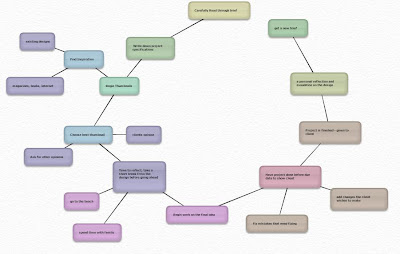This is a creation of a situation where two people are talking where one is wearing the six hats. In this you will see how the hats change his view on things...
The White Hat...
"Dad can i go to the toilet?"
"Yeh there's one down there, and over there"
"Well i could go to that toilet, but it is all the way across the street. or i could go to that toilet but it looks pretty dirty... well i could start to go in that one that is dirty, then finish the rest across the street..."
The Red Hat...
"Dad can i go to the toilet?"
"I Guess"
"What do mean by 'I Guess' if i dont go i could get serious problems. why cant you understand what im going through."
"Ok Then Just Go"
"Don't get pushy your so mean all the time, you always hurt my feelings. Why?"
"Please just go"
"Ok but ill be a while cause ill be crying..."
The Black Hat...
"I gotta go to the toilet."
"Well go."
"Nah i don't want to. I bet its dirty, or there's no toilet paper, or there is probably someone in there, or i bet it smells really bad."
"Well don't then"
"Yeh but i bet my blater will pop, and then ill go to hospital. its too late now i probably won't make it any way..."
The Yellow Hat...
"Can I go to the toilet?"
"Yeh Sure."
"Are you serious, thank you so much. Your the best. Thank you Thank you Thank You. I hope i make it. there probebly just cleaned it so i bet it will be freshness all over..."
The Green Hat...
"Can I go to the toilet?"
"Yeh of..."
"TOO LATE!!!"
The Blue Hat...
"Can I go to the toilet?"
"Yep."
"Ok Good, now, how should i go? What do i need to do? Where should i go?..."
As you can see the six hats thinking can completely change a situation when placed into action.
This is a great tool for the designer as he/she is able to view things from all angles and thus being a success.












































